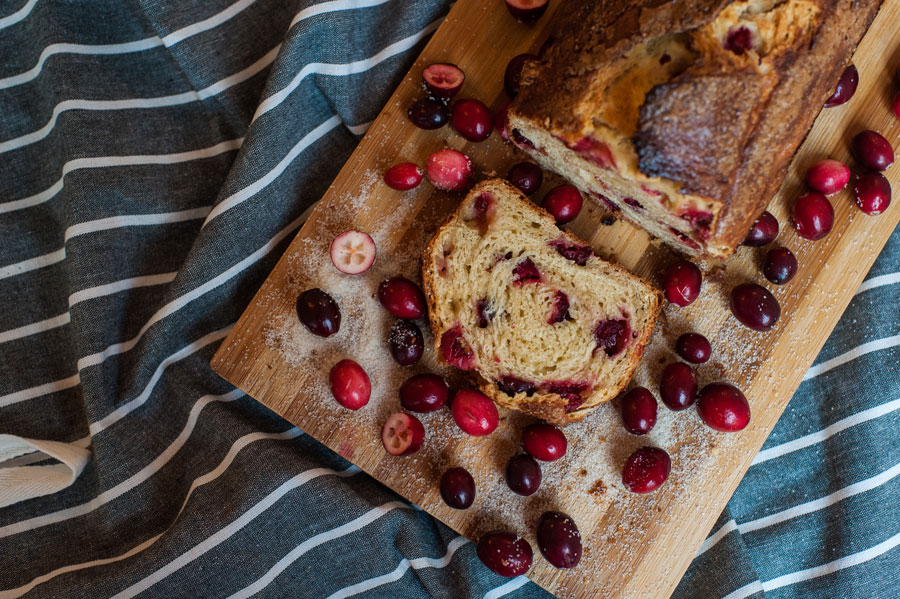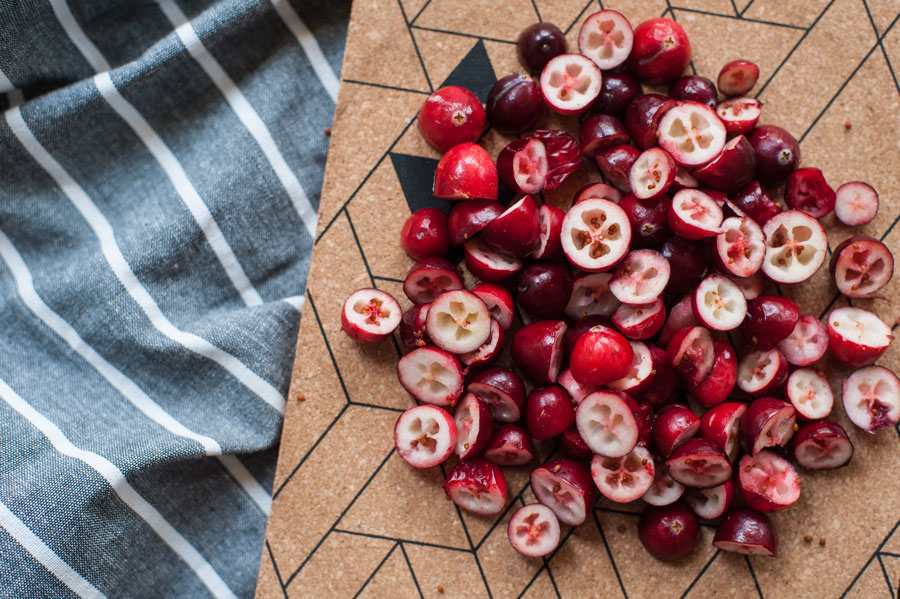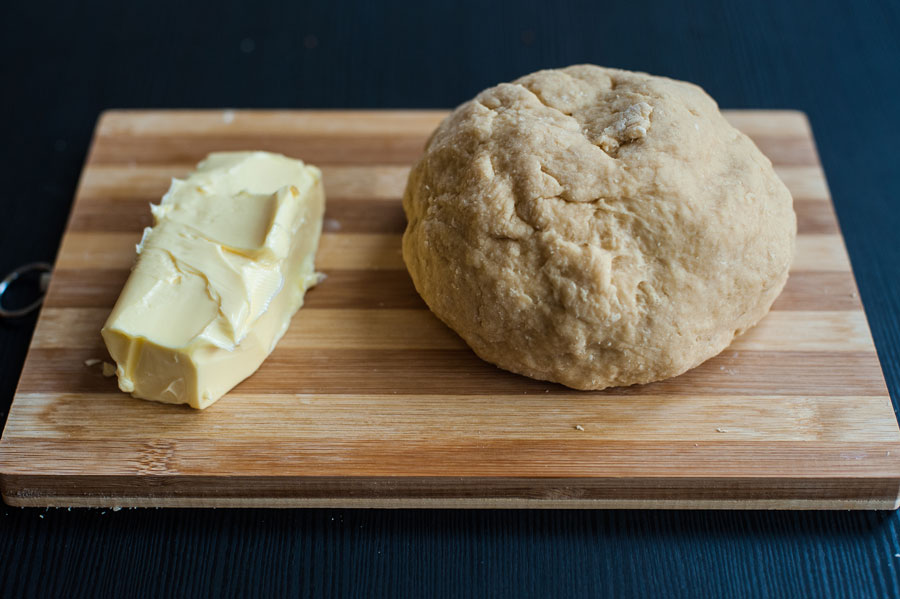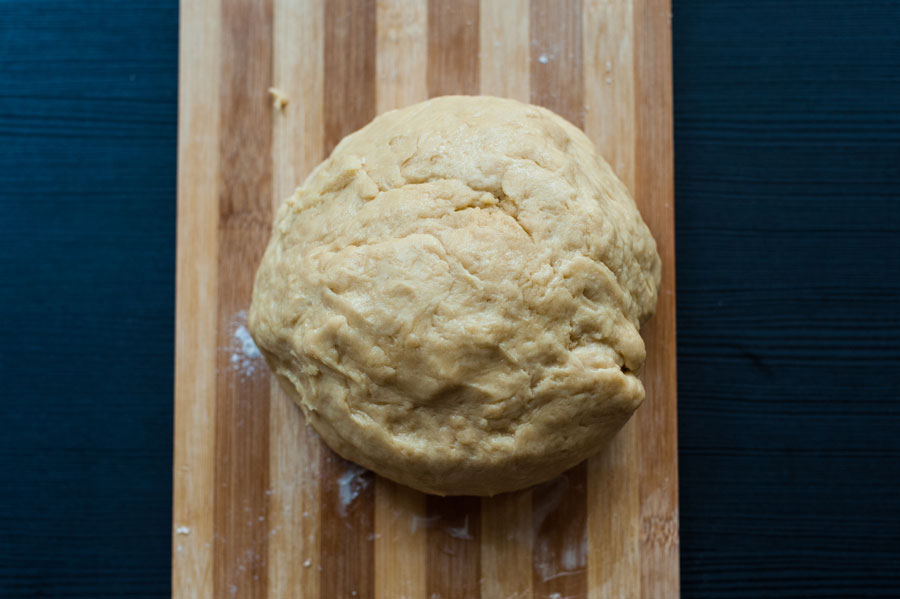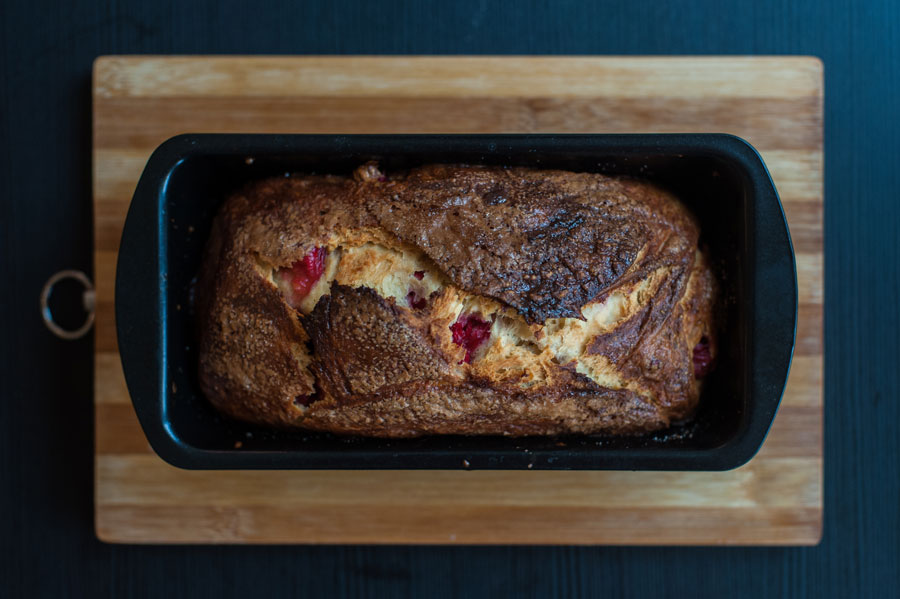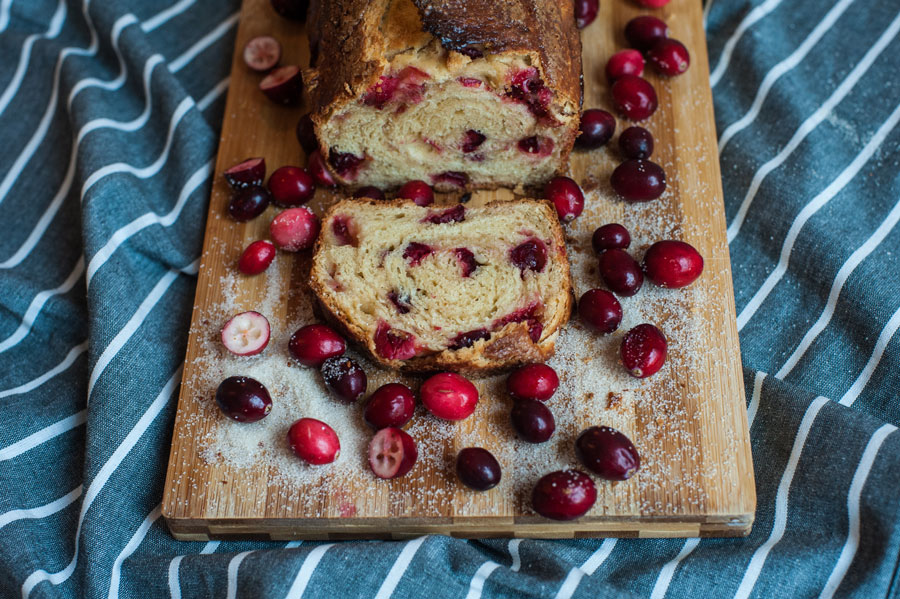Recipe
Cranberry & Brown Sugar Brioche
Words & Photography by Kate Beard
A few weeks ago when I was browsing through the bookstore, longing over the myriad of colourful recipe books, one in particular jumped out and caught my eye. To say that my jaw dropped would not be hyperbole – I think I may have even started drooling on the spot. I had just seen Huckleberry, by Zoe Nathan, and its gorgeous cover photo: a yellow, fluffy brioche with a perfect crust, sliced open to reveal a secret, gooey swirl of blueberries.
So when I had to come up with a new way to use that staple Thanksgiving ingredient – cranberries – in something other than a sauce, I knew exactly what I wanted to do. True, the cranberries don’t spill out of this loaf in the seductive way that they do in the Huckleberry brioche. But it more than makes up for it in the deliciously tart explosion of flavour the cranberries impart to each bite of the rich yet light-textured bread.
Adapted from “Fresh Blueberry Brioche” recipe by Zoe Nathan in “Huckleberry”.
Ingredients
230g fresh cranberries, sliced in half
100ml whole milk
1 tbsp active dry yeast
200g all purpose flour
400g bread flour
80g brown sugar
granulated sugar, for sprinkling
1 tsp salt
6 eggs
1 egg yolk
150g unsalted butter, soft
egg wash (1 egg + 2 tbsp whole milk or cream)
Method
Take your halved cranberries and place them in the freezer while you make the bread.
Warm the milk slightly in a saucepan or the microwave (my favourite word for the temperature milk should be when mixing with yeast is “fingervärm”, Swedish for “finger-warm”, meaning nearly the same temperature as your body so that the milk feels neither hot nor cold to your touch.)
Pour the milk into a large mixing bowl. Whisk the yeast into the milk.
Add the flours, 20g of the brown sugar, the salt, the eggs and extra yolk to the bowl altogether. With a dough hook on low speed (or a big spoon if you’re mixer-less), begin stirring until the dough comes together.
If using a dough hook, increase the speed to medium and work the dough until it becomes an elastic and shiny ball. If you aren’t, then this is when you begin to hand-knead the dough. You’ll need to do it for about 10 minutes, maybe longer, making certain to keep your hands and work surface floured. The dough is done when, pressed, it briefly retains the imprint of the fingerprint and then begins to spring back into place.
If using a mixer, reduce the speed to low again and add the butter bit by bit. Stop the mixer every so often to scrape the bowl and hook. The dough will probably come apart but don’t worry – keep going and it will come back together. At this point, increase the speed to medium again to blend the butter in fully. If you aren’t using a mixer, this is a fantastically messy (and admittedly pretty fun) part. Basically, you will take the soft butter and squish it into the dough using your bare hands. For this part, don’t flour your hands or surface. Just make sure your counter is super clean because the dough will basically come apart and there will be doughy butter and buttery dough all over the place. Just keep gathering it back together, kneading, twisting, and working the mixture until miraculously, it will begin to resemble a dough ball again (albeit a much shinier, greasier-looking one). Knead it for about 5 minutes longer, until it becomes springy like before.
Now lightly flour your work surface—probably a different one, unless you feel like cleaning up the butterpocalypse that just happened. Roll out your dough into approximately a 16-by-10 inch/40-by-25 cm rectangle, with the shortest side facing you.
Sprinkle the cranberries along the top half of the bread roll, along with 30g more of brown sugar, and then roll the dough down towards you, making layers of dough and cranberries. You might need to crimp the edges of the dough shut as you roll to keep the cranberries from escaping. If you have small bread pans and need to split the log, use a pastry cutter or sharp knife to cut it in half. Crimp the ends shut again to keep the cranberries in.
Place the log (or logs) onto a flat, greased baking sheet. Cover with cling film and refrigerate for at least 1 hour, or as long as overnight. The longer you let the bread sit, the more the flavours will develop (read: the more the cranberries will ooze juicy goodness into the surrounding dough.)
When the brioche is done chilling, take it out of the refrigerator. On a lightly floured surface, roll the dough out once more into a rectangle with the shortest side towards you. It will be a smaller rectangle, about 12-by-6 inch/30-by-15 cm. Do this gently, as the cranberries won’t yield to the rolling like soft fruits would, and you might puncture your dough if you rush to roll it out. This isn’t the end of the world, but it just might not make as pretty and smooth a brioche as you imagine.
Sprinkle the remaining 30g of brown sugar onto the rectangle, then roll it up again as you did the last time.
Grease your bread tin (or tins) and place the loaf (loaves) inside. Cover with cling film and place in a warm, non-draughty part of the house until the loaf has doubled in size. This will probably take around 3 hours, depending on the temperature of the place where your bread is rising.
When the brioche is nearly ready, preheat your oven to 200 C.
Brush the top of the brioche with the egg wash and then sprinkle a fair bit of granulated sugar over the top.
Bake for about 45 minutes, until the top of the brioche is golden-brown; another way of knowing your bread is done is to tap the side of the tin—finished loaves will sound hollow.
Remove from the oven and allow it to cool a bit before trying to remove it from the pan. Serve warm with a liberal slather of butter.
